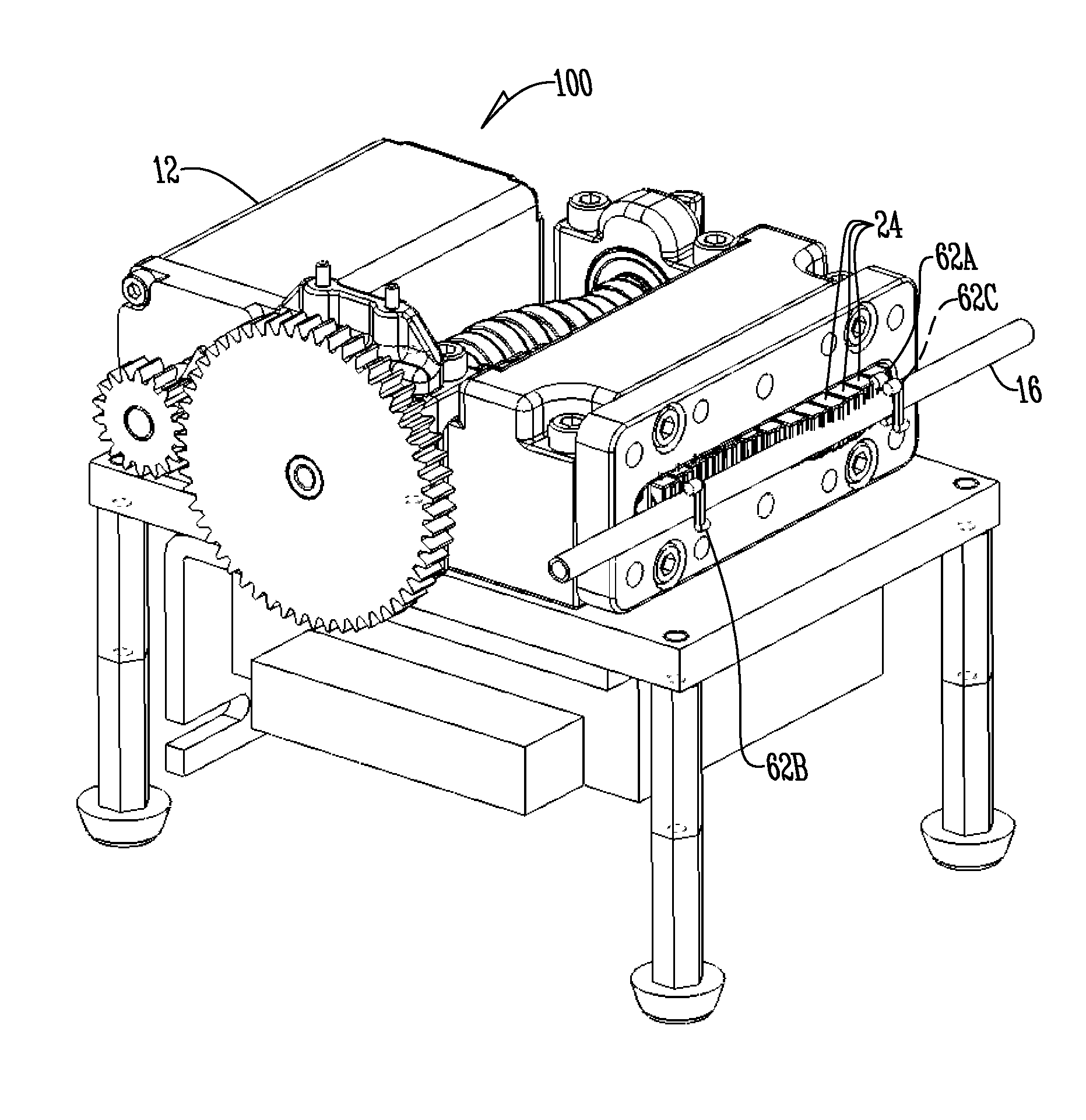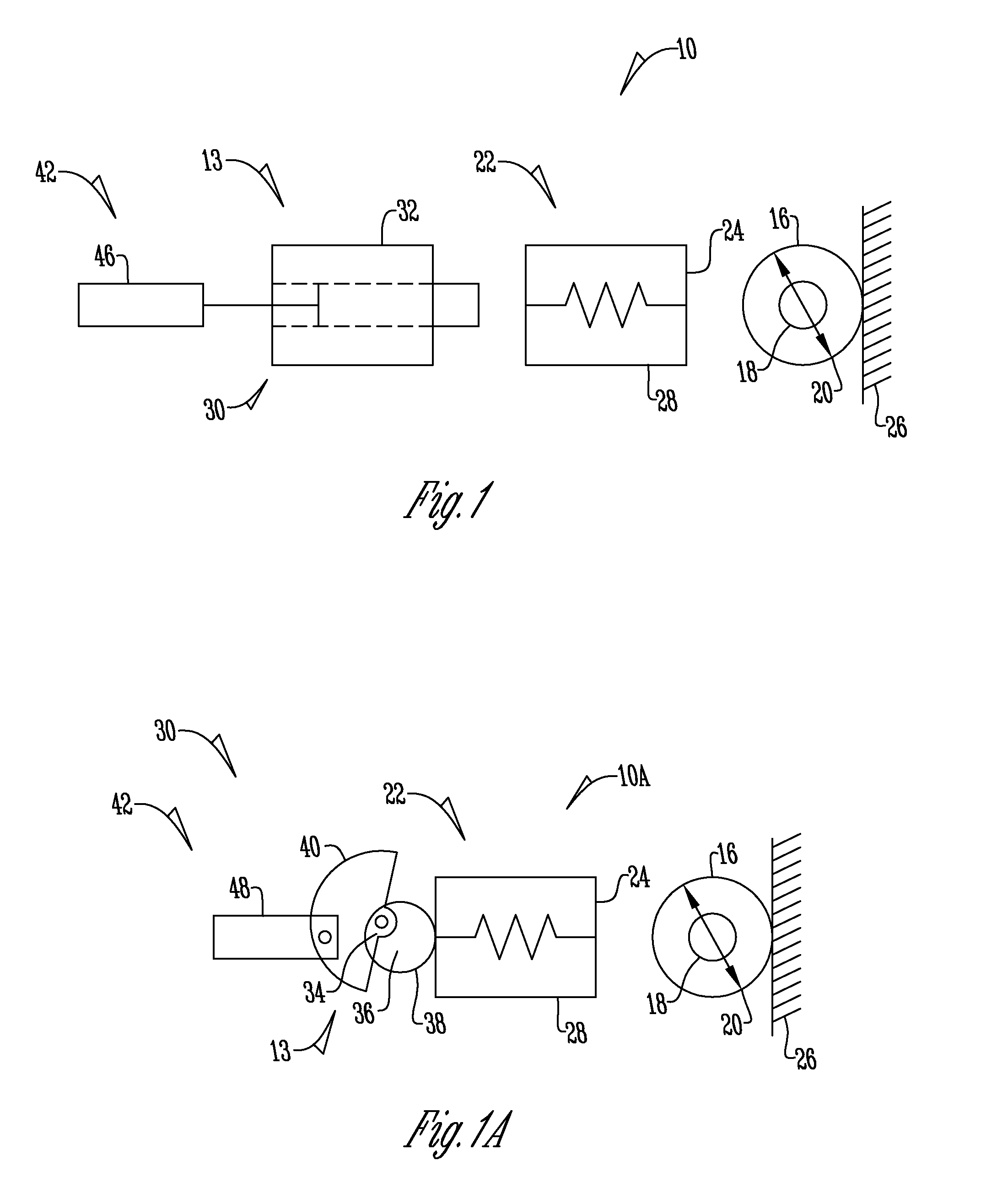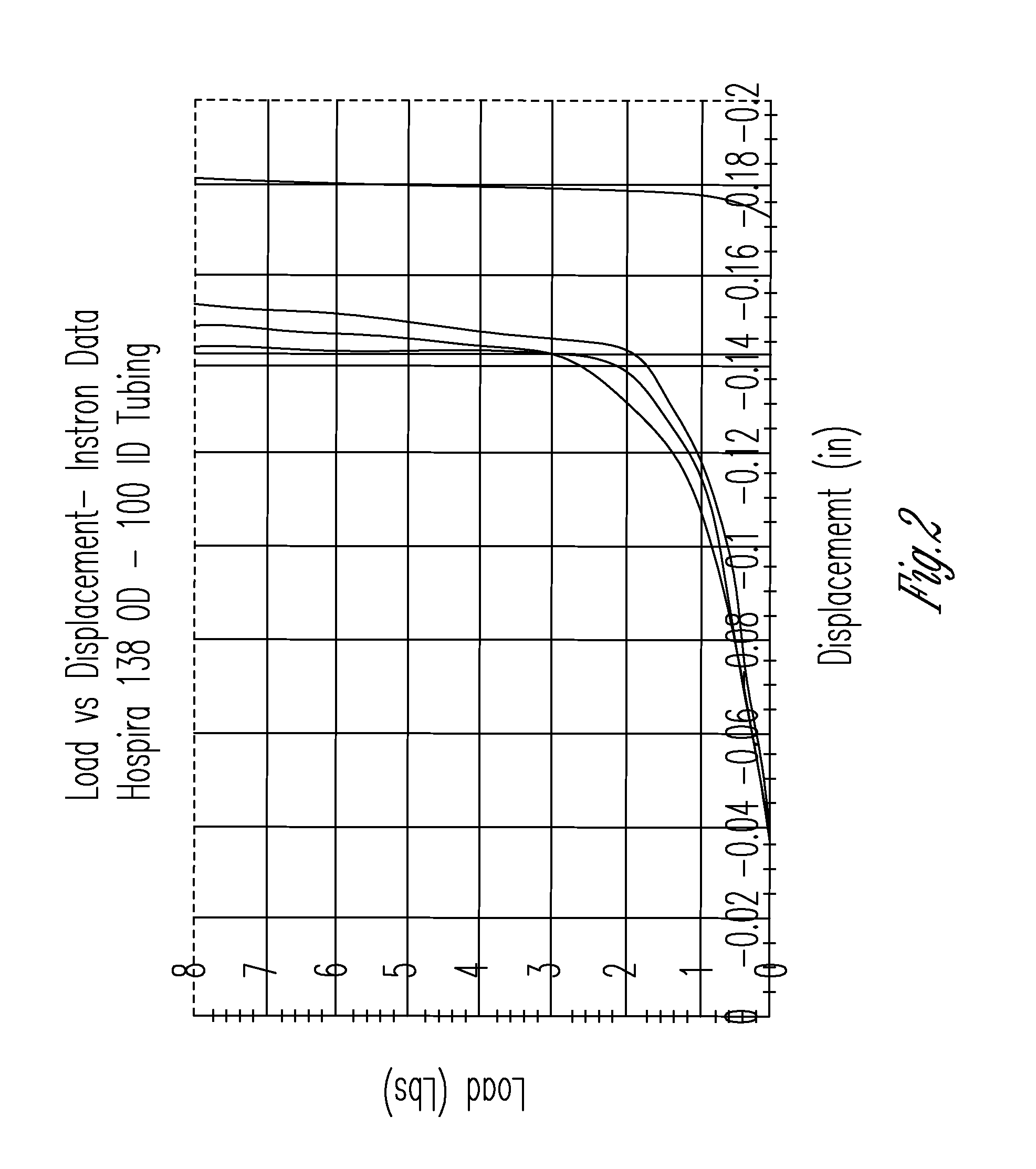Fluid flow rate compensation system using an integrated conductivity sensor to monitor tubing changes
a technology of conductivity sensor and flow rate compensation, which is applied in the field of pumps, can solve the problems of affecting the pump flow rate, reducing volume fraction and increasing densification, and small effect, and achieves the effect of compensating for degradation or wear
- Summary
- Abstract
- Description
- Claims
- Application Information
AI Technical Summary
Benefits of technology
Problems solved by technology
Method used
Image
Examples
Embodiment Construction
[0030]The figures illustrate the invention in the context of infusion systems 10, 10A, 100; however the invention has applicability to other infusion systems and fluid handling systems as well. As generally depicted in FIG. 9, the infusion systems 10, 10A, 100 utilize a pump 12 that in one embodiment is a peristaltic pump that includes a controller 14 that contains an algorithm to adjust fluid flow by operating a motor 9 that manipulates or operatively engages via a pumping mechanism 13 a section of tubing 16 through which fluid flows. The tubing 16 can be of any shape, including the standard circular or alternatively hexagonal, square or the like. The tubing 16 has an inner diameter 18 and outer diameter 20 and in addition has a predetermined ovality, modulus of elasticity and other such inherent characteristics. The tubing 16 may be any type of material including PVC, a polymer composite, a conductive polymer composite (CPC) or the like.
[0031]FIGS. 1 and 1A show two different embo...
PUM
 Login to View More
Login to View More Abstract
Description
Claims
Application Information
 Login to View More
Login to View More - R&D
- Intellectual Property
- Life Sciences
- Materials
- Tech Scout
- Unparalleled Data Quality
- Higher Quality Content
- 60% Fewer Hallucinations
Browse by: Latest US Patents, China's latest patents, Technical Efficacy Thesaurus, Application Domain, Technology Topic, Popular Technical Reports.
© 2025 PatSnap. All rights reserved.Legal|Privacy policy|Modern Slavery Act Transparency Statement|Sitemap|About US| Contact US: help@patsnap.com



